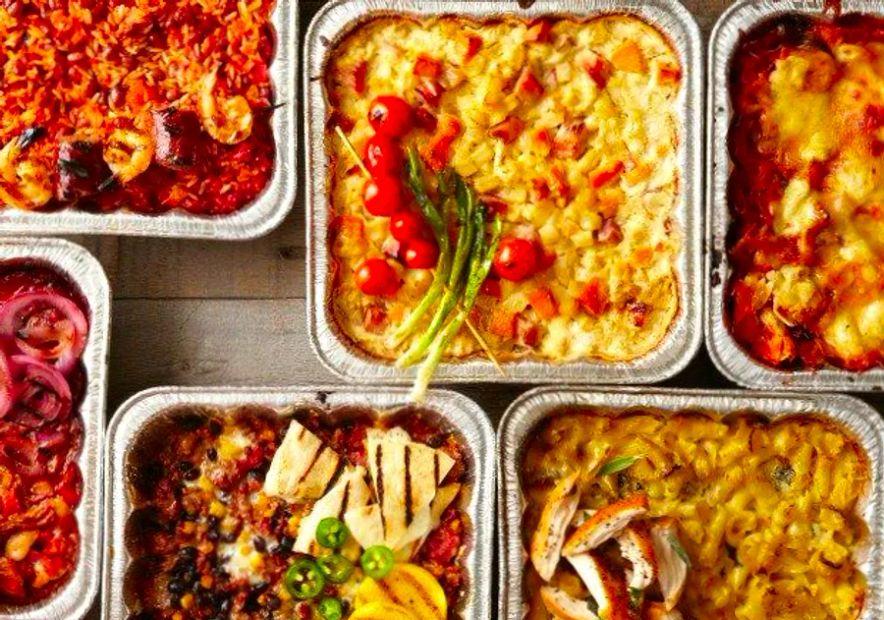These 12 Common Errors Are Sabotaging Your Casseroles

Casseroles have long been the go-to solution for busy weeknights, the perfect make-ahead dish, and an excellent way to transform leftovers into a satisfying new meal. They are the ultimate comfort food, simple enough for both kids and overworked parents to prepare, and even the most discerning foodies can't resist a classic casserole. And if they insist they don't, just mention 'cassoulet' or 'tian Provençale'—and watch their objections fade. But just because they're easy to make doesn't mean they can't go wrong. Here are twelve key areas where your casserole could go awry.

1. Using the Wrong Type of Baking Dish
Casserole dishes must, above all, be oven-safe. Whether you opt for glass, ceramic, cast iron, or enameled cookware, ensure that your dish is meant for oven use. There's nothing more frustrating than preparing a perfect casserole in that beautiful pottery piece you picked up at an art fair—only for it to crack during baking.
2. Choosing the Wrong Sized Dish
After confirming that your dish is oven-proof, double-check that it’s the right size for your recipe. Be mindful of the shape and volume specified in the recipe (an oval 10-inch dish holds less than a rectangular one) as well as the depth. It's important not to overfill the dish—keep it no more than three-quarters full to avoid spillage while cooking. For added protection, place the dish on a baking sheet to catch any drips, or set a sheet pan on the rack below to catch overflow. You don't want to sacrifice convenience just to end up scrubbing your oven.
15 Simple 5-Ingredient Casseroles to Save Time and Money
3. Failing to Remove Excess Moisture from Wet Vegetables Before Cooking
Casseroles shine when the flavors have a chance to blend, which is why they often taste even better the next day. Excess moisture, however, is the enemy of a perfect casserole, and vegetables are the biggest culprit. To avoid a watery casserole, thaw frozen veggies completely in a colander over a bowl, pat dry, squeeze out excess moisture from leafy greens like spinach or chard, and quickly cook watery vegetables such as onions, mushrooms, or squash to release their moisture. For vegetables like eggplant or zucchini, salt the slices and let them drain in a colander for 30 minutes, then rinse and pat dry.
4. Cutting Your Raw Vegetables into Uneven Sizes
Casseroles should be easy to serve with a fork, so aim for bite-sized pieces of your ingredients. If you're using leftovers, they're already cooked and can vary in size. However, raw vegetables that will cook in the oven need to be cut into uniform pieces to ensure even cooking throughout.
5. Skipping the Par-Cooking of Vegetables, Pasta, Grains, or Rice
Not all vegetables cook at the same rate, so it's essential to give some a head start by par-cooking. Quick-cooking vegetables like broccoli can be blanched in just a few minutes, while hard vegetables like potatoes and carrots require longer par-cooking. A quick 2-5 minutes in the microwave can do wonders. For onions, a brief sauté can intensify their flavor and prevent them from tasting raw in the final dish.
6. Failing to Par-Cook Pasta, Grains, or Rice
Unless your recipe specifically calls for raw pasta or grains, you risk them remaining too crunchy or absorbing too much moisture when added directly to a casserole. This can leave your dish dry. Par-cooking your pasta or grains for 4-5 minutes less than the usual cooking time ensures they are tender, yet firm enough for casserole texture. Don’t forget to cool them quickly—either by plunging into an ice bath or running them under cold water—to stop the cooking process at the right point and prevent them from becoming mushy.
7. Skipping the Browning of Meat
Although casseroles are a quick and easy dish, it’s always worth taking the time to brown your meat or poultry before adding it in. Browning enhances flavor, and while you're not cooking the meat through, you’re allowing it to release fat and moisture. This step helps to prevent your casserole from becoming greasy while also enriching the overall taste.
Grandma's Favorite Casserole Recipes
8. Using Fresh Herbs
It may seem odd to avoid using fresh herbs, but for casseroles, dried herbs actually work better. Fresh herbs lose both flavor and color when baked for a long time, and their potency can vary. Use dried herbs in the casserole itself, then garnish with fresh herbs right before serving to enhance the flavor and add a pop of color to the finished dish.
9. Not Allowing Baked Casseroles to Rest Before Serving
When you’re eager to get dinner on the table, letting a casserole rest for 15-20 minutes might seem unnecessary. But this step is crucial—not only does it prevent burning your mouth, but it also allows the casserole to set. Fresh out of the oven, casseroles are full of bubbling liquids that can spill out if you serve them too soon. Think about the difference between a lasagna that holds its shape and one that collapses into a mess. Giving it time to firm up rewards you with a beautifully layered dish.
10. Leaving It Covered or Uncovered for Too Long
Covering a casserole ensures even cooking, helps retain moisture, and prevents burning, while uncovering it allows for browning, crisping, and steam to escape. So when should you cover or uncover your dish? If you're following a recipe, stick to its instructions, but if you're improvising, a good rule of thumb is to cover the casserole for the first half of the cooking time to get things started, then uncover it for the second half to release steam and achieve that golden, crispy top. If your casserole has a cheesy topping, you can leave it covered the entire time—the covered cooking will melt the cheese, and the uncovered part will brown it. For crispy toppings, add them halfway through cooking after removing the cover to avoid sogginess and prevent burning.
11. Cooking at the Wrong Temperature
While recipes typically specify the temperature and cooking time, if you're creating your own casserole, aim to cook it between 300 and 400°F. Casseroles generally perform best at a moderately high heat, especially if the ingredients are already cooked. A shallower dish can handle a higher temperature and shorter bake time, while deeper casseroles or those with raw vegetables and proteins should cook at a slightly lower temperature for a longer time. When in doubt, 350°F is your go-to.
12. Not Freezing Properly
Casseroles are perfect for freezing, and many recipes suggest making a double batch—one to serve and one to freeze. However, freezing them improperly can lead to disaster. If you're freezing your casserole, consider using a disposable foil pan for both assembly and storage to keep your good bakeware free. Let the cooked casserole cool to room temperature for about an hour, then cover and refrigerate overnight. Never place a hot casserole directly into the fridge or freezer, as it can raise the appliance's temperature and pose a safety risk. Once chilled, cover the casserole with parchment paper, then wrap tightly in plastic wrap and secure with heavy-duty foil. To bake from frozen, you can thaw it in the fridge overnight or bake directly from frozen by placing it in a cold oven and turning it on. As the oven heats, the casserole will warm up slowly. Always check the internal temperature with a food thermometer to ensure it reaches 165°F for safe consumption. Don’t try to speed up the process by increasing the oven temperature, or you may end up with a dish that’s cooked on the outside but raw inside.
Learn More
- 25 Comfort Food Casseroles That Start With Rotisserie Chicken
- Favorite Breakfast Casseroles
- Browse All Casserole Recipes

1

2

3

4

5
Evaluation :
5/5